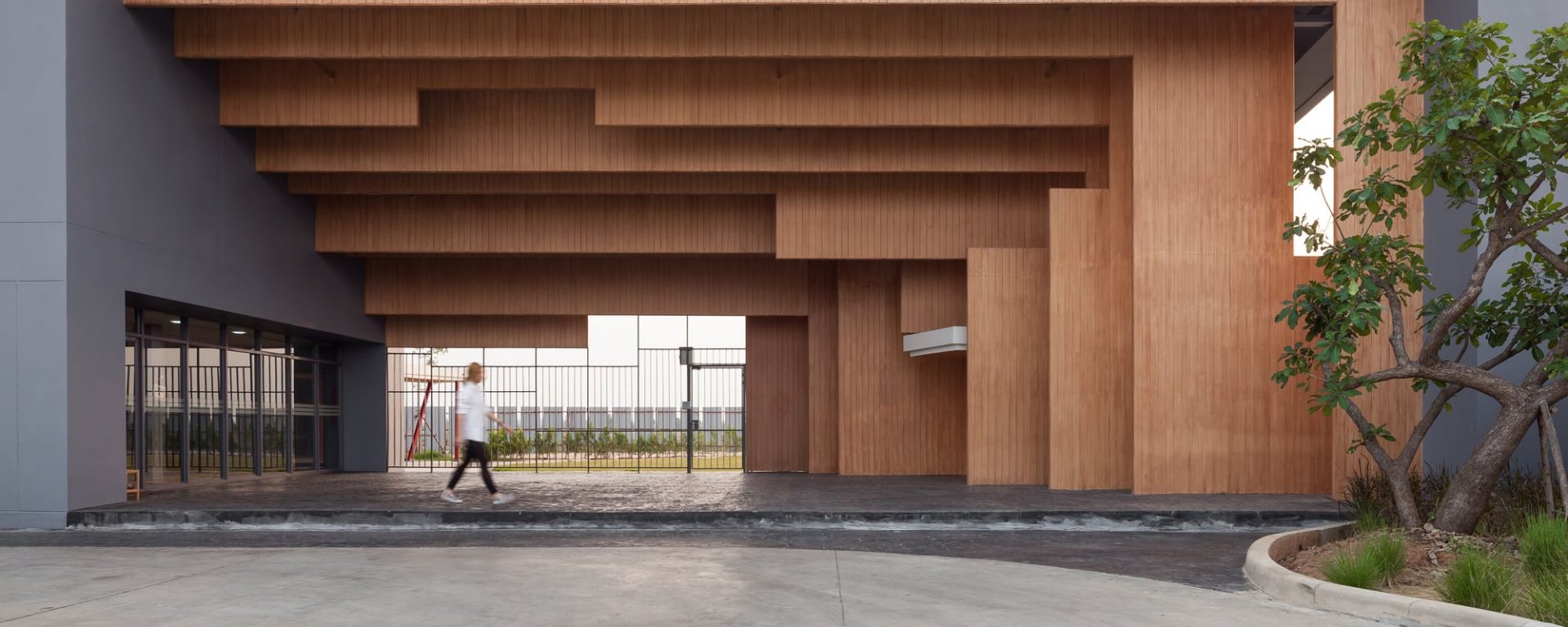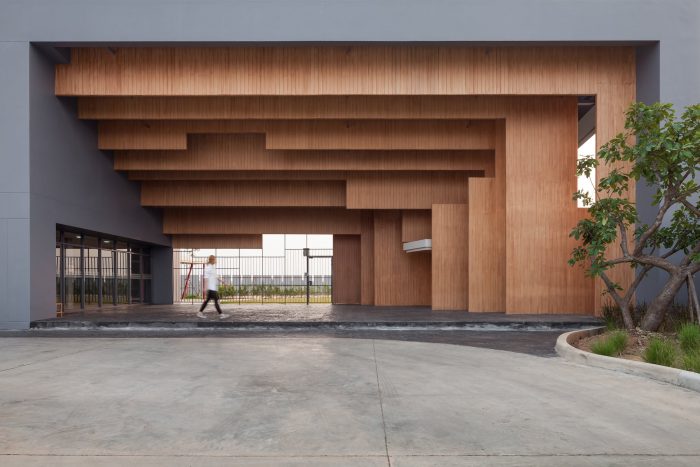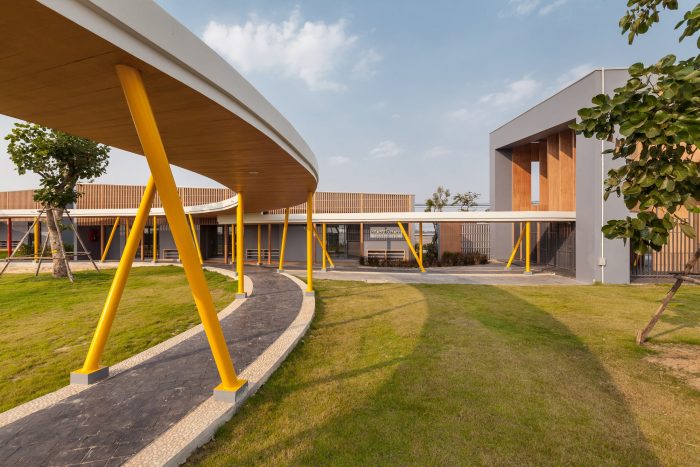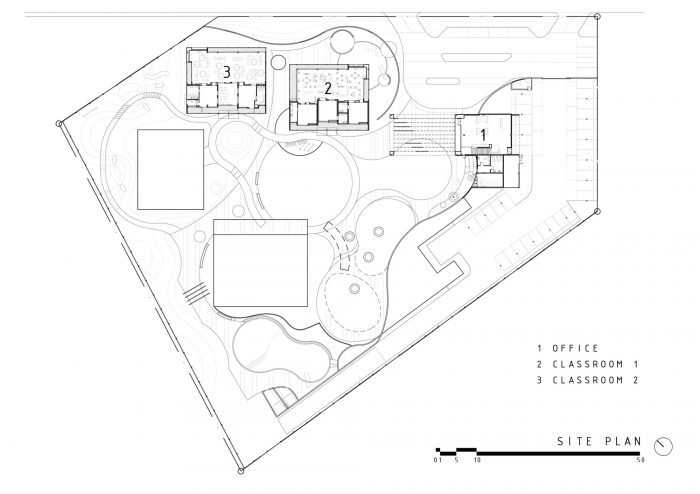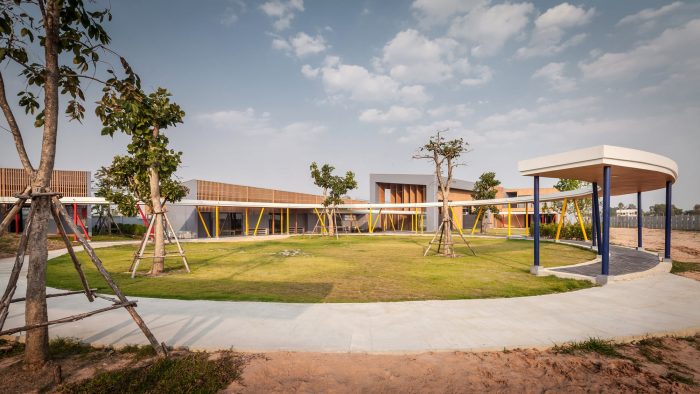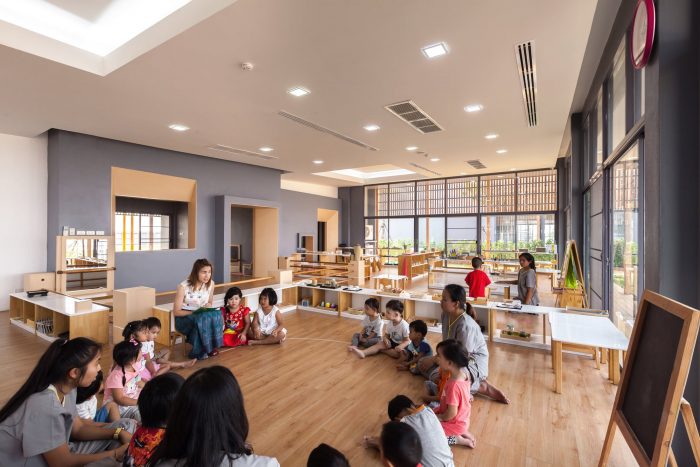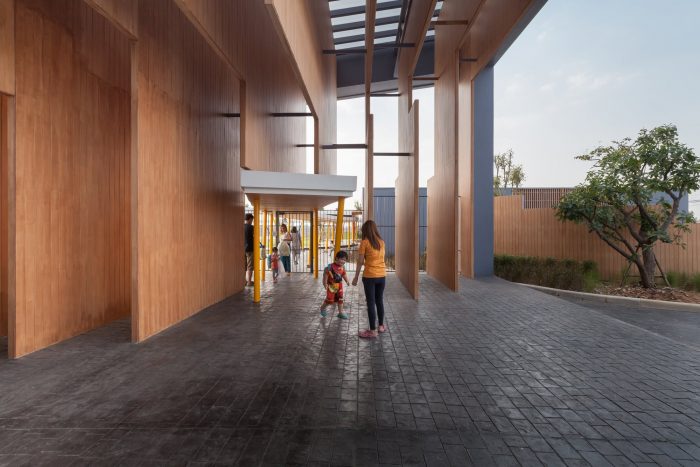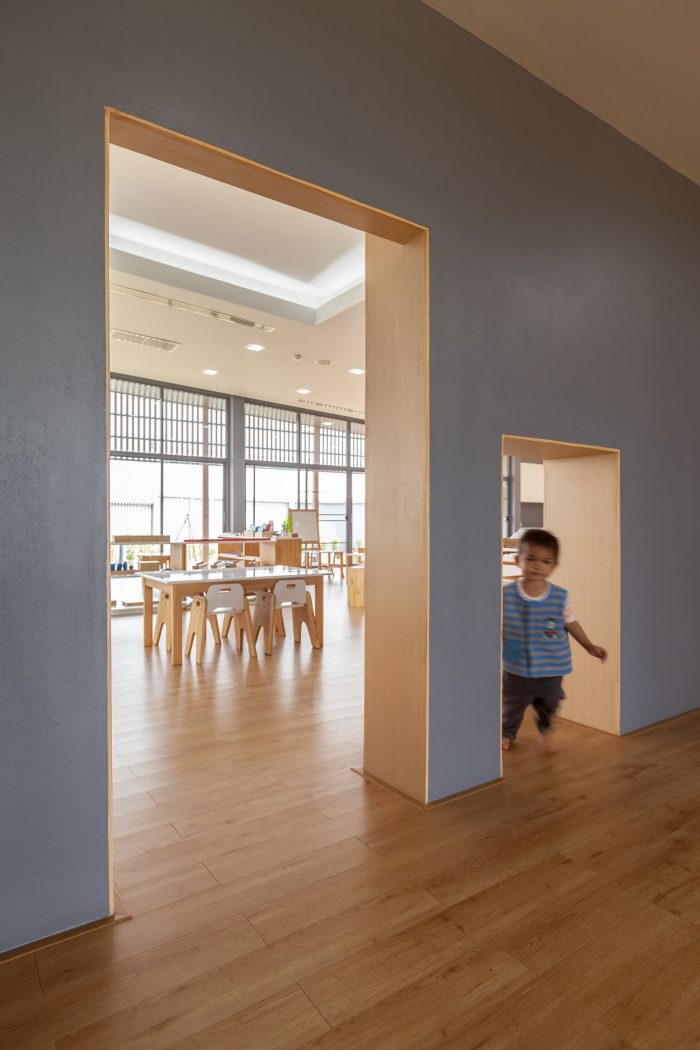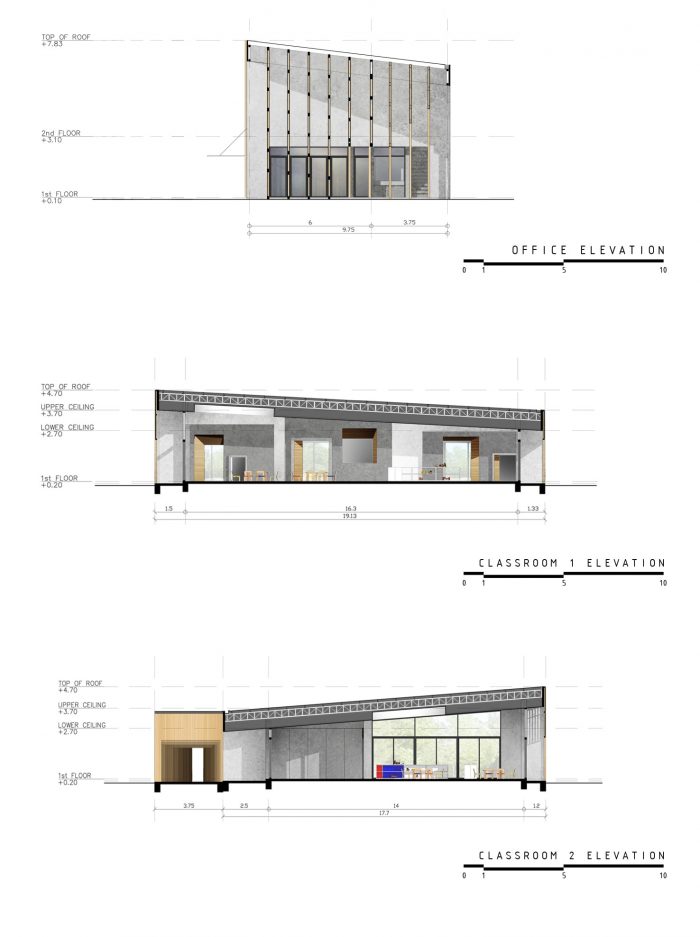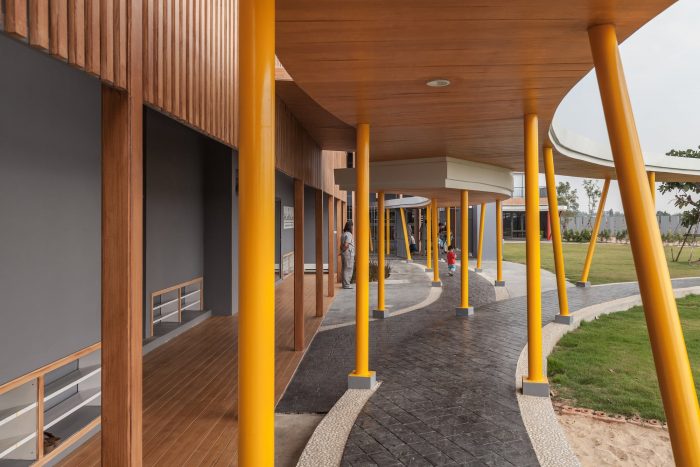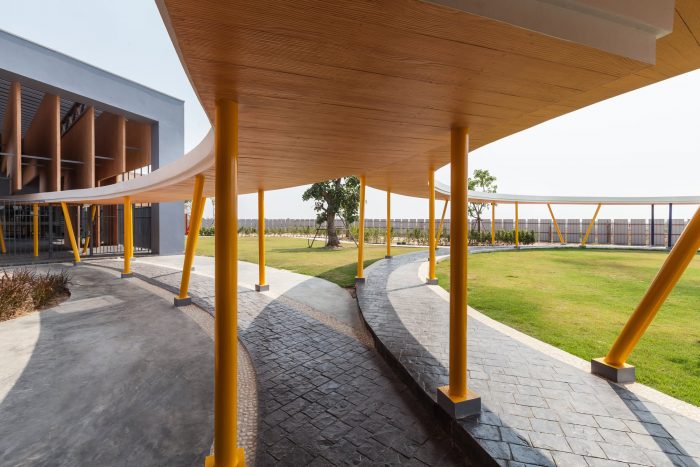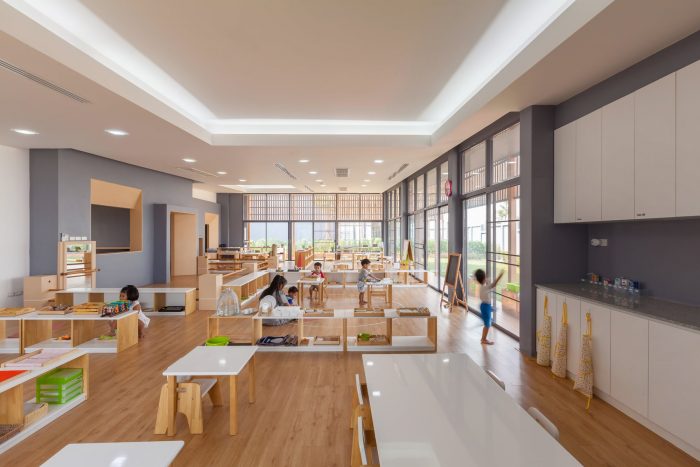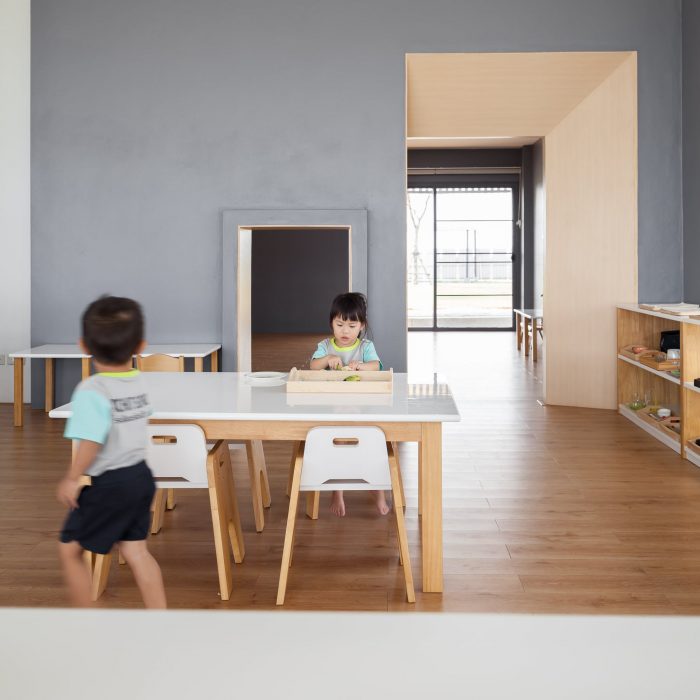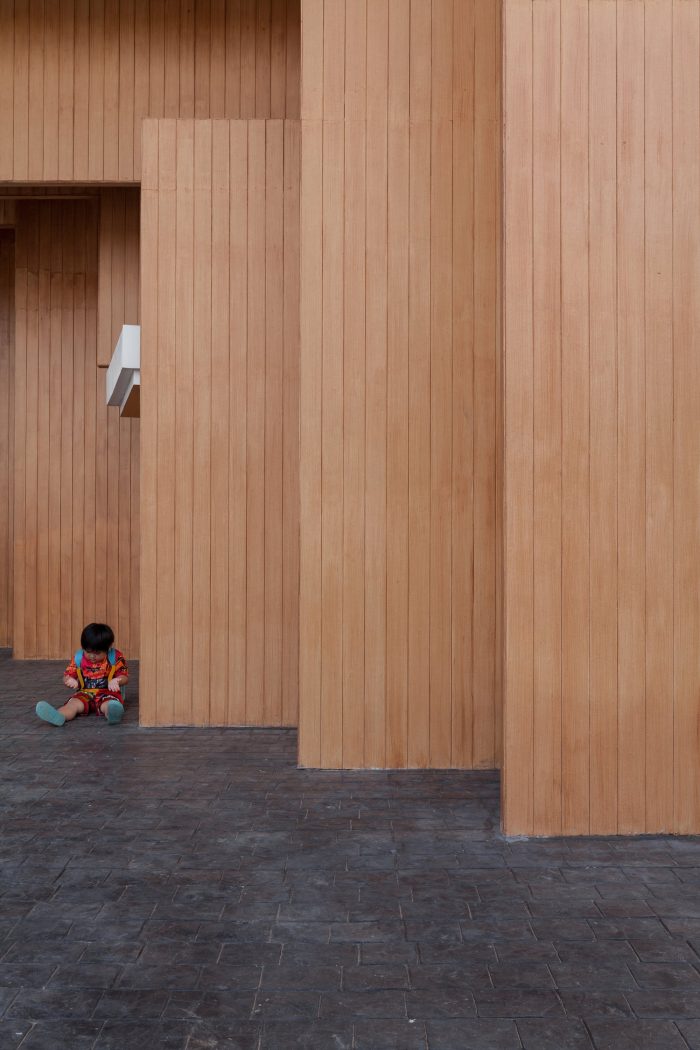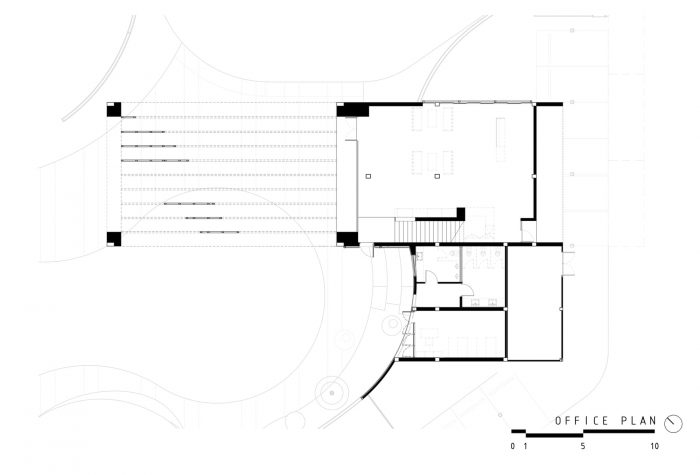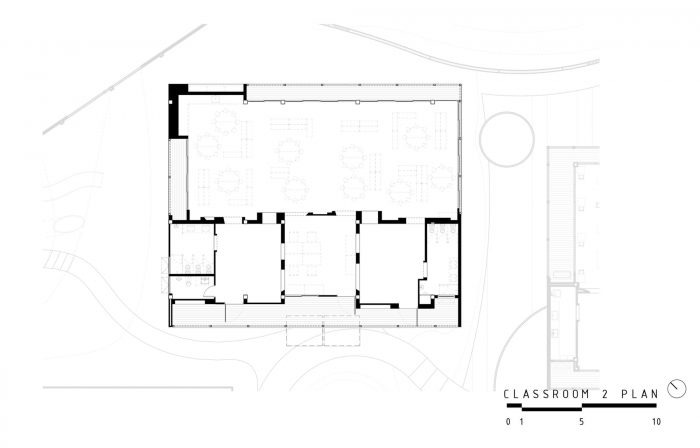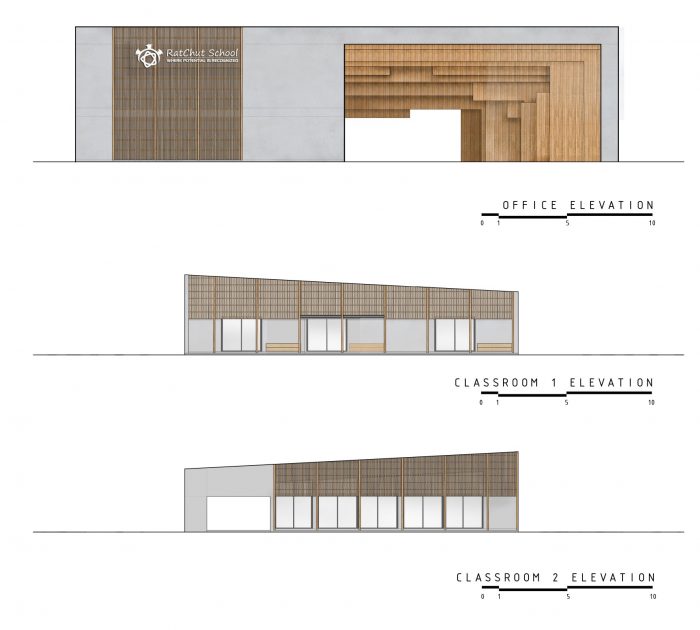该项目设计反映了 “蒙特梭利 “的理想学习环境,学习空间应该更像一个家,而不是一个典型的教室。因此,学习区被分割成多个小尺寸的 “房间”,所有的孩子来到学校时都能感觉到像家一样。这些 “房间 “的布局被设计为与孩子们的每项活动相关。
The project design reflects the ‘Montessori’ ideal learning environment, where a learning space should resemble a home more than a typical classroom. Therefore, the learning area is split into multiple small-sized “rooms”, where all the children could feel more like home when they come to school. The layout of these “rooms” has been designed to correlate with each of children’s activities.
对这个年龄段的孩子来说,最好的学习环境是大自然,这就是为什么建筑布局经过精心规划,以支持孩子的自学,并整合室内和室外的空间、建筑和景观,提供不同的学习活动。这个布局由不同的 “自然 “元素组成,每个元素都适合于儿童发展的不同阶段。为了给这个项目创造一个理想的学习环境,所选择的自然元素包括洞穴、沙子、土堆和树木。
The best learning environment for children this age is nature, that why the building layout has been carefully planned to support children’s self-learning and integrated both indoors and outdoors spaces, architecture, and landscape to provide different learning activities. This layout consists of different “nature” elements, each suitable for different stages of child’s development. The selected natural elements that have been used to create an ideal learning environment for this project include caves, sand, mounds, and trees.
1. 洞穴 “的概念在入口处被转化为木质层。层层叠叠之间的空间允许自然光穿过,使其成为主导,有趣,并为孩子们创造一个温和的新鲜氛围。
2. 2. 在幼儿楼周围的操场上使用了 “沙子”,以促进幼儿触觉的发展。
3. 3.自由形态的 “土丘 “被用于球场和周边地区的景观,孩子们可以在这里跑来跑去,利用这个空间进行户外学习体验。这个区域也用于连接所有的建筑和学习空间。
4. 4.种植 “树木”,为户外学习空间提供遮阳。
1. The “cave” concept has been transformed into wooden layers at the entrance. The spaces in between cascaded layers allow the natural light to pass through making them dominant, interesting and creating a gently fresh atmosphere for the kids.
2. “Sand” is used in the playground around the Toddler Building to facilitate the development of the sense of touch in toddlers.
3. Freeform“Mound” is used in the landscape of the court and surrounding areas, where children could run around and utilize the space for an outdoor learning experience. This area also uses to connect all the buildings and learning spaces together.
4. “Trees” are planted to provide shades for outdoor learning spaces.
这个项目还包括一栋供家长使用的建筑,以及两栋用于教室的建筑,这些建筑通过屋顶的走廊相互连接。所有的建筑都被漆成灰色调,与木质板条交替使用,给外人的眼睛营造出一种光滑而又温暖的感觉。建筑的设计很简单,这让孩子们很容易理解项目的布局。另外,木质板条有助于过滤掉外面的阳光,使孩子们接触到足够的阳光,这对他们的视觉和学习是最有利的。
This project also includes one building for parents, and two buildings for classrooms, where the buildings are interconnected with roofed corridors. All the building was painted in grey tones alternating with wooden slat to create a smooth, yet warm feeling to the eyes of the outsiders. The architecture is designed to be simple, which allow children to easily understand the layout of the project. Also, wooden slat helps filter out sunlight from outside, so that children are exposed to just enough sunlight that’s optimal for their visions and learning.
此外,这种木质板条将限制儿童对外面的视线,这可以帮助减少来自教室外的干扰,并帮助儿童更好地专注于他们当前的任务。教室建筑还由多个小房间组成,为不同的活动服务。这一规划的灵感来自于孩子的家,在每个 “房间 “里,他们可以玩耍、学习和发展不同的技能和知识。因此,”小房间 “比一个大的常规开放房间更适合和更能刺激儿童的学习。
Additionally, this wooden slat will limit children’s view of the outside, which can help decreasing distractions from outside the classrooms and help children to focus better on their current tasks. The classroom buildings also consist of multiple smaller rooms that serve different activities. This planning was inspired by a child’s home, wherein each ‘room’ they could play, learn and develop different skills and knowledge. Thus, a ‘smaller room’ is more suitable and more stimulating for children in learning than a big regular open room.
Architects: Design in Motion
Area : 1100 m²
Year : 2016
Photographs :Ketsiree Wongwan
Manufacturers : AGC, BEGER, Lysaght, Muang Thong Aluminium, Shera
Lead Architects : Pakapong Leelatian, Narin Bunjun, Sirin Vanichvoranun
Landscape Architect : Design In Motion Co.Ltd
Engineer : Ltd., Kor-it Structural Analysis and Design Co.
Client : Noppadon Chatchaiponrat
City : Tambon Hua Nong
Country : Thailand

